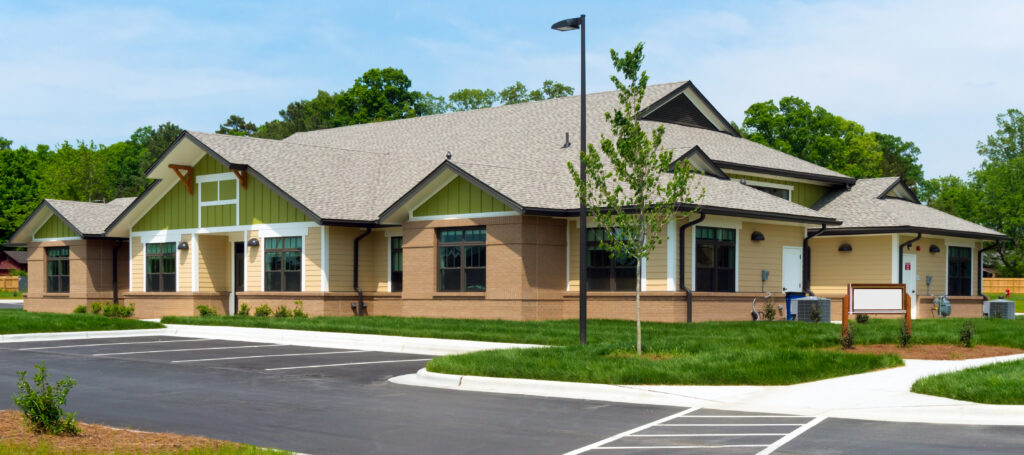South Dakota Assisted Living: Common terms, questions to ask, and how to pay for assisted living
South Dakota is a beautiful and calming landscape for seniors to enjoy the later years. The cold winters bring a stillness to the air and the mild summers allow for exciting outdoor adventures. The state ranks in the top ten for senior living. 17% of the state’s population are aging adults 65 years and older, and this number is increasing, even as the neighboring region declines. Assisted living in South Dakota is ideal for aging adults who may require some assistance with activities of daily living. Typically, when people think of senior care they imagine a nursing home. However, there are several other options aside from nursing homes. An assisted living community or facility describes a specific level of care, which allows seniors the benefit of security and peace of mind because they may experience increased socialization, classes for health and fitness and quality nutrition plans. All assisted living communities are licensed by the state, and provide a bedroom and restroom, meals, and assistance with care.
South Dakota has cities which offer excellent healthcare to residents: Sioux Falls, Deadwood, Pierre, Watertown, Mitchell, Aberdeen, Rapid City, among others.
- South Dakota Assisted Living: Common terms, questions to ask, and how to pay for assisted living
- Assisted Living requirements in South Dakota
- What do communities and facilities in North Dakota offer?
- Laws and regulations in South Dakota
- How much does assisted living in South Dakota cost?
- How to pay for assisted living in South Dakota
- Common terms that differentiate levels and types of senior living:
- Questions to Ask
- Resources and links related to Senior Living and Care
- Search Other Areas Assisted Living

Maryland offers a variety of senior living and care choices for your loved one, each providing care for specific needs and preferences.
Common terms that differentiate levels and types of senior living:
- Continuing Care Retirement Communities (CCRCs)- typically include independent living, assisted living, residential care and skilled nursing services all on one campus.
- Independent Living Communities – provide residents a setting without the burden of home ownership. Residents commonly live in fully equipped private apartments or cottages from a studio to large two-bedroom units.
- Care Home or Adult Family Care Home- are private residences in a home-like setting that provide care services to a smaller more limited number of residents (typically 5-12 residents, depending on each state’s regulations).
- Assisted Living- provides housing and supportive care in a community setting, but the residents do not require 24-hour nursing care.
- Memory Care- a care setting for residents with memory loss or confusion. The community typically has a “secured” entry for residents that may wander. This care can be provided in different care settings depending on the state licensing requirements.
- Skilled Nursing is state licensed to provide a safe, therapeutic environment for people who require rehabilitative care 24 hours a day.
Assisted Living requirements in South Dakota
Housing
Bedrooms must provide 75 feet of floor space for personal use (not including their bed). All bedroom must have a shower and sink. Additionally, 37 feet per resident in the facility for recreation.
What do communities and facilities in North Dakota offer?
Assisted living in South Dakota has four categories of service for residents.
- Personal care services.
- Assistance with chores for residents who need it.
- Meal preparation.
- Basic ADLs.
Medication management
Residents manage and take their own medication whenever possible. Any staff helping residents take medication must have proper training to do so.
Laws and regulations in South Dakota
Licensing
The South Dakota Office of Health Facilities Licensure and Certification are responsible for licensing all assisted living facilities and communities.
Staffing requirements in South Dakota
Sufficient staff must always be available to assist residents. A staff member must always be awake 24/7.
All assisted living facilities have a required orientation for any hired employees as well as continued education.
Grievances
Every resident is allowed to report any suspected abuse with zero fear of any repercussion. Complaints can be filed directly to The South Dakota department of Health.

How much does assisted living in South Dakota cost?
South Dakota is one of the most affordable states in the country for assisted living, at nearly 35% less than the national average of $4,500
The average cost of assisted living in South Dakota is $3,350 per month, about $1,150 less that the average across the country.
- National average cost of assisted living per month: $4,500
- South Dakota: $3,350
- North Dakota: $3,400
- Montana: $4,450
- Minnesota: $4,550
- Wyoming: $4,200
South Dakota’s average cost will vary by city.
Sioux Falls: $2,950
Rapid City: $3,925
Residents of South Dakota seeking more options for assisted living and other senior housing options may look into neighboring states, due to the relatively low population of the state and the overall resources and facilities being lower in number.
How to pay for assisted living in South Dakota

You want to consider your payment options for assisted living, memory care, and care homes. For these services, Medicare is NOT an option for payment.
The most common payment for these services would be out of pocket Private Pay and assessing a combination of retirement funds, personal savings, and pension payments.
Medicaid can also be an option, be sure to see if you or a loved one qualifies.
Long-Term Care insurance is also a possible option in cases of chronic conditions, be sure to see if you or a loved one qualifies.
For our Veterans and spouses of veterans, be sure to assess Veteran Aid and your eligibility for these benefits.
Medicare – NO:
- Medicare does NOT pay for Assisted Living.
- People 65 years and older and individuals with end stage renal disease are eligible for Medicare benefits, no matter their income.
- Coverage is meant for people in need of short-term care.
Private pay – YES:
- Many families pay for assisted living with private funds.
- Private pay can be a combination of retirement funds, personal savings, and pension payments.
- Family members may contribute funds to pay for assisted living or other senior housing and care.
Medicaid – MAYBE:
- Medicaid provides health coverage to millions of Americans. Eligible participants include: low-income adults, elderly adults and people with disabilities.
- Medicaid is administered by state, according to federal requirements. The program is funded jointly by each state and the federal government.
- Every state has their own individual Medicaid assistance program.
- National guidelines are in place do decipher how states must spend Medicaid money, but with allowances toward the guidelines.
- The state determines what levels of care will be covered by Medicaid, who is eligible, and how much the state will reimburse the care community.
- If you are unsure whether you qualify for Medicaid, you should apply. You may be eligible depending on your household income, family size, age, disability and other factors.
Long-term Care Insurance – MAYBE:
Long term care insurance is a great way to pay for assisted living, and planning ahead is important when considering how to pay for senior housing and care. Nearly 75% of people over the age of 65 will require long-term care and services at some point. Buying into long-term care insurance when a person is in their 50s and 60s is the most common time to do so.
- Long-term care insurance helps cover the costs of chronic medical conditions.
- Individuals and couples with the ability to pay into long-term care insurance have the advantage of a head start in allocating funds for senior care.
Veteran Aid and Assistance – MAYBE:
This benefit is available to some military veterans and surviving spouses who live in an assisted living community and those who have in-home care.
- There are specific guidelines, but a veteran may qualify for as much as $2,050 each month.
- A veteran with a sick spouse may be eligible for $1,600 per month.
- If a veteran has passed, their surviving spouse can qualify for $1,300 per month.

Questions to Ask
Finding a senior living community can be overwhelming. Here are some tips on things to be observant of:
- Make sure the facility is clean and well maintained. You can tell a lot about the operation by noting what is clean and maintained. Are doorknobs loose or damaged? Do you see any frayed carpet or trip hazards?
- Visit during lunch hour to observe what the residents are eating. Ask questions about the nutrition program. Is there diversity in meals, healthy fruits and vegetables served at all meals, drink options?
- Speak to residents and/or family members to learn their perspective.
- Ask about staff and resident engagement. Get a feel for how staff interact with residents.
- Ask about the life enrichment programs. Activities are crucial when it comes to quality of life and play a key role in care for older adults.
- And finally (along with a plethora of more things to consider), get to know the leadership in the building. If you feel good around the Executive Director, Head Nurse, Lead Activities Director and even the Chef or Janitor, it is a good sign you can trust them with the care of your loved one.
Resources and links related to Senior Living and Care
Eldercare Locator is a nationwide service that connects older Americans and their caregivers with trustworthy local support resources. Connect with services such as meals, home care or transportation, or a caregiver education or respite from caregiving responsibilities. The Eldercare Locator is a public service of the Administration on Aging (AoA), an agency of the U.S. Administration for Community Living.
Medicare provides a search feature to find & compare providers near you, most senior housing and care providers are included on CareAvailability.com. Find & compare plans in your area. Determine if you qualify for premium savings
Medicaid offers information on how to apply for Medicaid, eligibility criteria, links to local state offices, and additional resources.
The Alzheimer’s Association is the leading voluntary health organization in Alzheimer’s care, support and research. Whether you are living with Alzheimer’s or caring for someone with the disease, information and resources are available.
